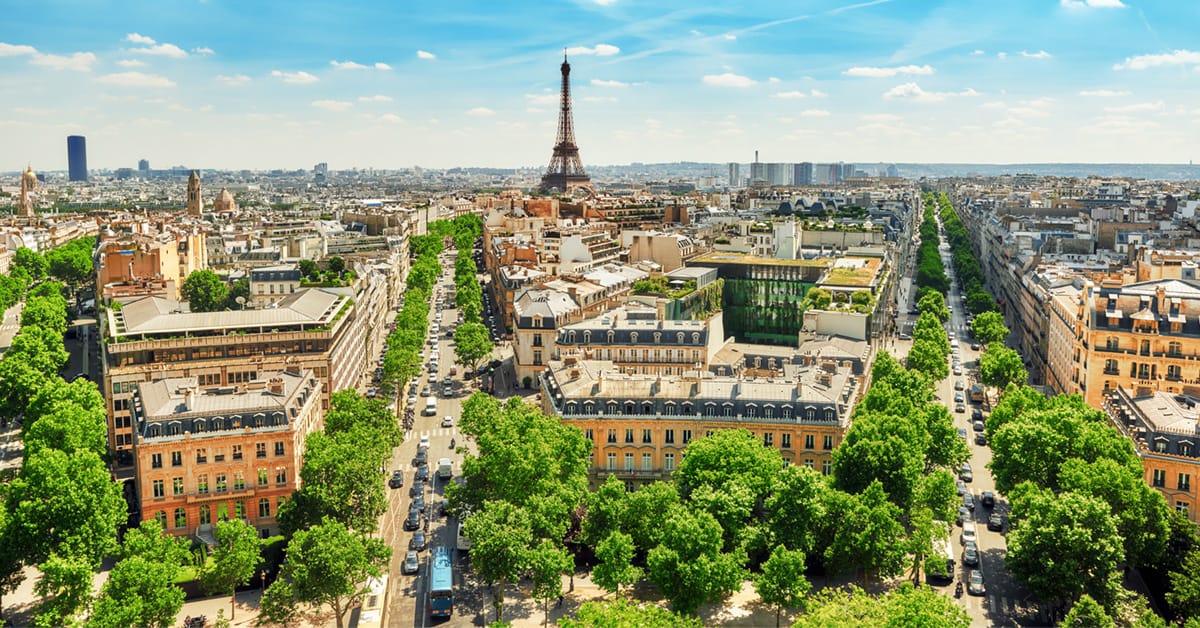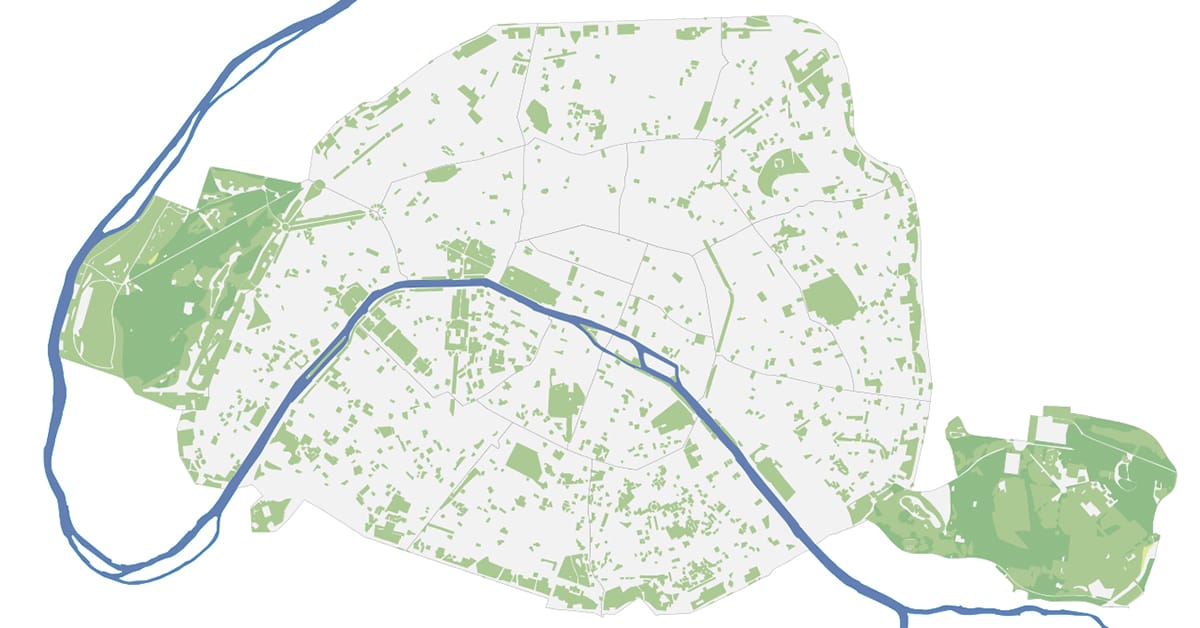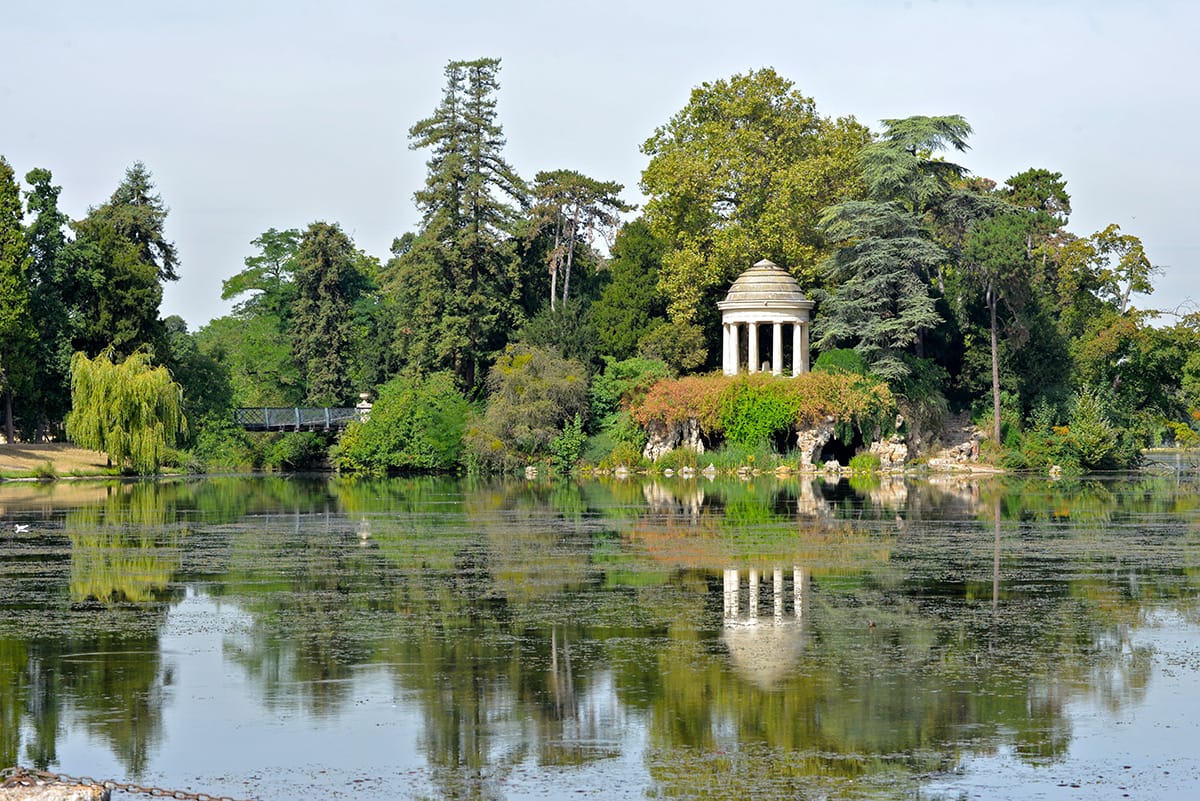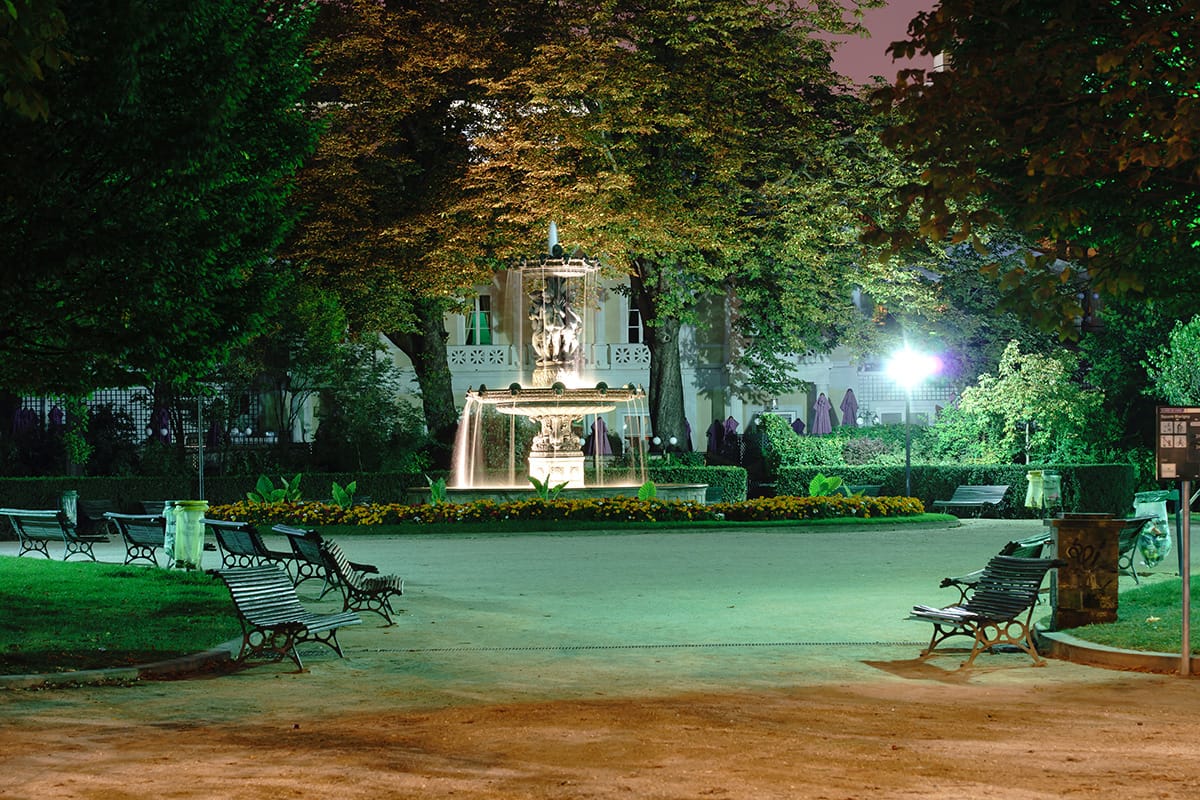 View of Paris looking south from the Arc de Triomphe, with tree-lined streets and boulevards typical of Alphand. Photo © Brian Kinney
View of Paris looking south from the Arc de Triomphe, with tree-lined streets and boulevards typical of Alphand. Photo © Brian Kinney
The engineer Adolphe Alphand led the multi-disciplinary planning office responsible for transforming and greening Paris in the 19th century.
While G.E. Haussmann is remembered mostly for piercing the historic urban fabric of Paris with wide boulevards, perhaps his best move was hiring the engineer J.C. Adolphe Alphand (1817–1891) in 1854 to direct the newly created parks department. Alphand, an engineer who was equally concerned with functional and aesthetic considerations, oversaw the creation and renovation of dozens of public parks, garden squares, and tree-lined promenades across a rapidly expanding Paris.

Plan of green spaces in Paris, 2012, expanding on the urban landscape architecture of Alphand from the 1800s. Photo ©Institut d’Aménagement et d’urbanisme de l’Île-de-France
The work of Alphand and his team was innovative and influential for several reasons:
- They collaborated across the disciplines of engineering, landscape architecture, architecture, and urban design.
- They applied the formerly aristocratic art of landscape architecture to urban public spaces.
- They began each project with a detailed analysis of soil, water, topography, and site context.
- They treated the urban landscape as a continuous “system” or network of interconnecting infrastructure and public spaces.
- They designed a flexible vocabulary of street furniture to be deployed across the entire city.

Lake and rotunda in the Bois de Vincennes, Paris, designed by Alphand and his team in the 1850s-60s. Photo © Pascale Guere.
The two largest parks, the Bois de Boulogne and Vincennes, encompassing over 1,800 hectares combined, were reclaimed from former royal hunting forests, and located at opposite edges of the city. Inside the city walls, Alphand and his team created three medium-sized parks (8 to 25 ha) and more than 20 modest “squares” at the intersections of streets and boulevards. These individual gardens and parks were connected by new thoroughfares lined with trees and benches above ground, and new utility infrastructures below ground. The synthesis of practical and ornamental features was a signature of Alphand’s work.
Related: From brownfield to urban garden: the Buttes-Chaumont Park at 150 years
Planners and landscape architects in other cities and countries took inspiration from Alphand and his book, Les Promenades de Paris (1867-73). In recent decades, Paris has resumed the work of Alphand by adding new green spaces and green infrastructures, and by improving the biodiversity and resource conservation of the older parks. What does all this mean for contemporary urbanism? Simply put: landscape is a constituent part of the urban fabric. Alphand was quite possibly the first modern planner to put in practice the idea of the green city.








